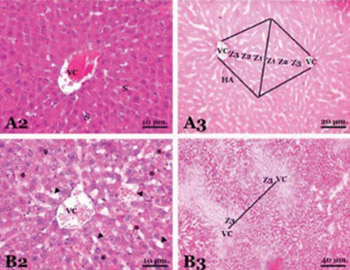The protective effect of diosmin on hepatic ischemia reperfusion injury: an experimental study
DOI:
https://doi.org/10.17305/bjbms.2013.2305Keywords:
diosmin, ischemia-reperfusion, flavonoid, liverAbstract
Liver ischemia reperfusion injury (IRI) is an important pathologic process leading to bodily systemic effects and liver injury. Our study aimed to investigate the protective effects of diosmin, a phlebotrophic drug with antioxidant and anti-inflammatory effects, in a liver IRI model. Forty rats were divided into 4 groups. Sham group, control group (ischemia-reperfusion), intraoperative treatment group, and preoperative treatment group. Ischemia reperfusion model was formed by clamping hepatic pedicle for a 60 minute of ischemia followed by liver reperfusion for another 90 minutes. Superoxide dismutase (SOD) and catalase (CAT) were measured as antioaxidant enzymes in the liver tissues, and malondialdehyde (MDA) as oxidative stress marker, xanthine oxidase (XO) as an oxidant enzyme and glutathione peroxidase (GSH-Px) as antioaxidant enzyme were measured in the liver tissues and the plasma samples. Hepatic function tests were lower in treatment groups than control group (p<0.001 for ALT and AST). Plasma XO and MDA levels were lower in treatment groups than control group, but plasma GSH-Px levels were higher (p<0.05 for all). Tissue MDA levels were lower in treatment groups than control group, but tissue GSH-Px, SOD, CAT and XO levels were higher (p<0.05 for MDA and p<0.001 for others). Samples in control group histopathologically showed morphologic abnormalities specific to ischemia reperfusion. It has been found that both preoperative and intraoperative diosmin treatment decreases cellular damage and protects cells from toxic effects in liver IRI. As a conclusion, diosmin may be used as a protective agent against IRI in elective and emergent liver surgical operations.
Downloads














